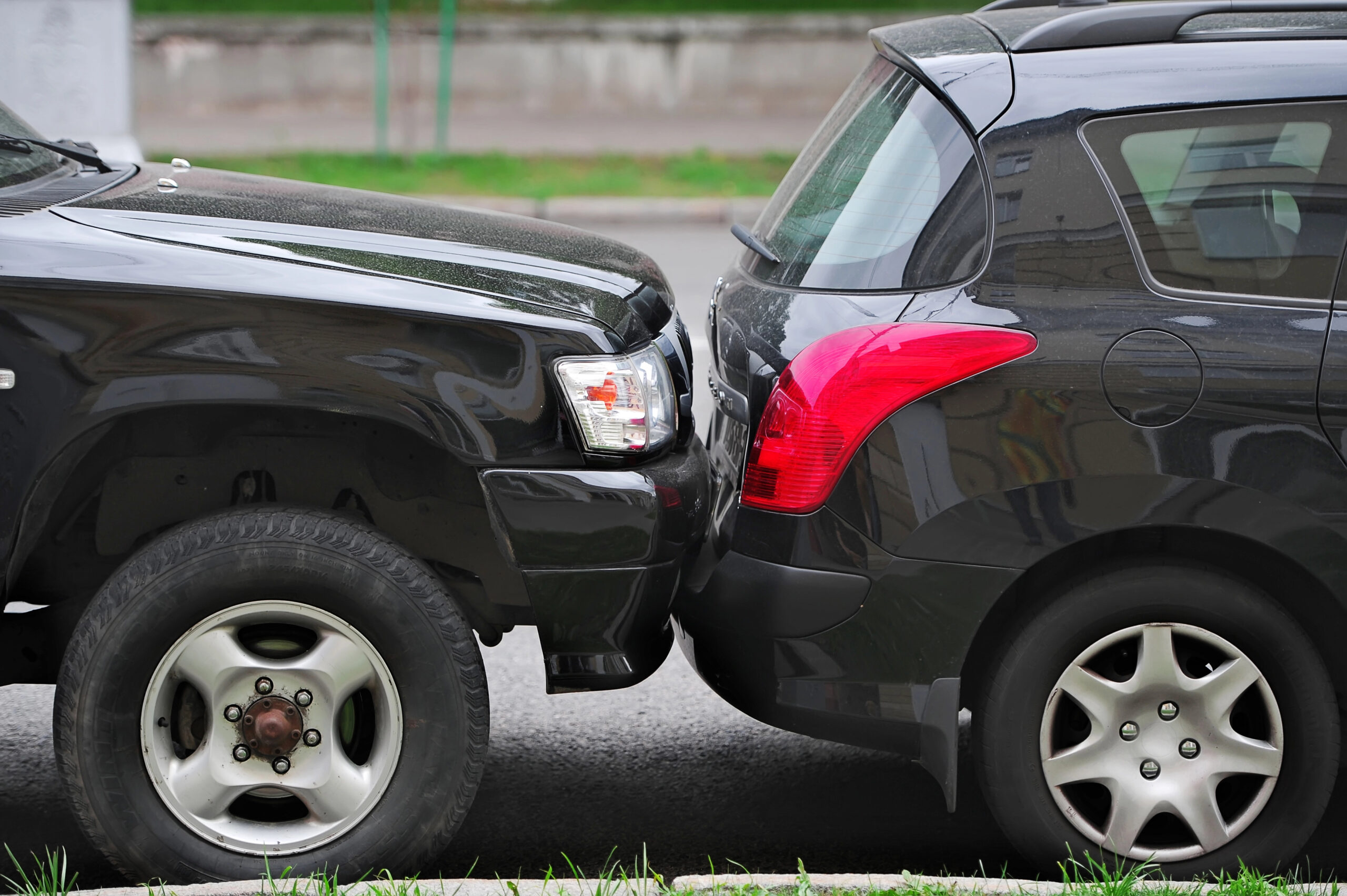Although a fender bender isn’t as serious as an accident that totals a car, it can still ruin your day and increase your car insurance rates. You may also lose any accident-free or claims-free discounts that you previously received — even if you’re not found at fault for the fender bender.
How insurance companies define a fender bender
A fender bender is defined as a minor car accident resulting in minimal damage, frequently to the involved car’s bumpers.
This could be a rear-end collision on the road, a slight bump when pulling out of a parking space or any other small collision while driving.
Despite the fact that fender benders frequently lead to low-impact property damage, they are still considered accidents and can result in non-obvious injuries such as whiplash. They can also increase your rates significantly if you’re at fault.
What to do after a fender bender accident
If you’re in a fender bender, immediately pull over to the side of the road and try to stay calm. Make sure everyone is OK, get the other driver’s contact and insurance information, and then call the police if the damage seems serious.
1. Exchange information and document the scene
Once you’ve made sure that no one has been physically harmed, exchange contact and insurance information with the other motorist involved in the accident.
Here’s what you should get in writing (or in a photo with your phone) from the other driver:
- Full name.
- Phone number and email address.
- Driver’s license and license plate number.
- Car insurance company and policy number.
You should also document the scene with photos of the damage and weather conditions. Be sure to get pictures from every angle of the damage that each vehicle endured.
If the incident was severe enough for the police to be involved, you should try to get copies of the accident report. You may also record any witness statements to help determine liability.
Having all this information will expedite the claims process for both you and the other driver.
Jerry Tip
Never leave the scene of a crash. No matter how minimal the accident is, you always need to stop and communicate with the other motorist involved. If you leave the scene, you could be charged with a hit-and-run.
2. Call the police — and file a report
Whether you need to file a police report depends on your state’s car accident reporting requirements, if someone was injured and how much the property damages cost.
For instance, many states don’t require you to file a police report if no one was injured and the damages cost less than $1,000. But because it can be difficult to diagnose injuries and calculate the cost of damages on the spot, it may be best to err on the side of caution and file a police report anyway — especially if you plan to submit an insurance claim.
3. Decide if you want to file an insurance claim
After you’ve filed with the police, the next important step is deciding if you want to submit a claim.
If the damage is minimal and your claim amount is equal to your deductible limits, you may decide not to file a claim. In this case, your rates after the accident will remain the same and you’ll still qualify for claims-free discounts.
Even if you and the other driver agree at the scene to not file against one another, there is no law requiring them to keep their word.
Learn more: How to file an insurance claim
Fender benders can impact your car insurance costs
A fender bender may not be as serious as getting T-boned or enduring a head-on collision at high speeds, but that doesn’t mean it can’t raise your insurance costs, even if it was a minor collision.
If you’re deemed at fault in the accident, your rates could increase significantly. Your insurance rates can still rise if you’re not at fault because you’ll likely become ineligible for any claims-free car insurance discounts that you currently hold.
Learn more: How to find the best cheap car insurance
FAQ
-
What is an example of a fender bender?
-
Should you call the police for a fender bender?

Kayda Norman is an insurance writer and editor with more than 12 years of content experience. She previously worked at NerdWallet as an insurance writer and content management specialist. She has covered a wide range of insurance topics such as high-risk drivers, auto insurance rate factors, and credit-based insurance scores. Her work has been featured in The New York Times, The Washington Post, and USA Today.

Everett Cook is an award-winning journalist and editor with more than 10 years of experience across a variety of industries. In editing for Jerry, Everett’s mission is to help readers have a better understanding of the costs of owning or leasing a car and to better understand their vehicle in terms of insurance and repairs. Prior to joining Jerry, Everett was an editor for Axios. His previous work has been featured in The New York Times, The Los Angeles Times, The San Francisco Chronicle, The Atlantic, Atlantic Re:think, The Boston Globe, USA Today, and others. He’s also been a freelance writer and editor with experience in SEO, audience building, and long-term content roadmaps. Everett is a proud graduate of the University of Michigan.









